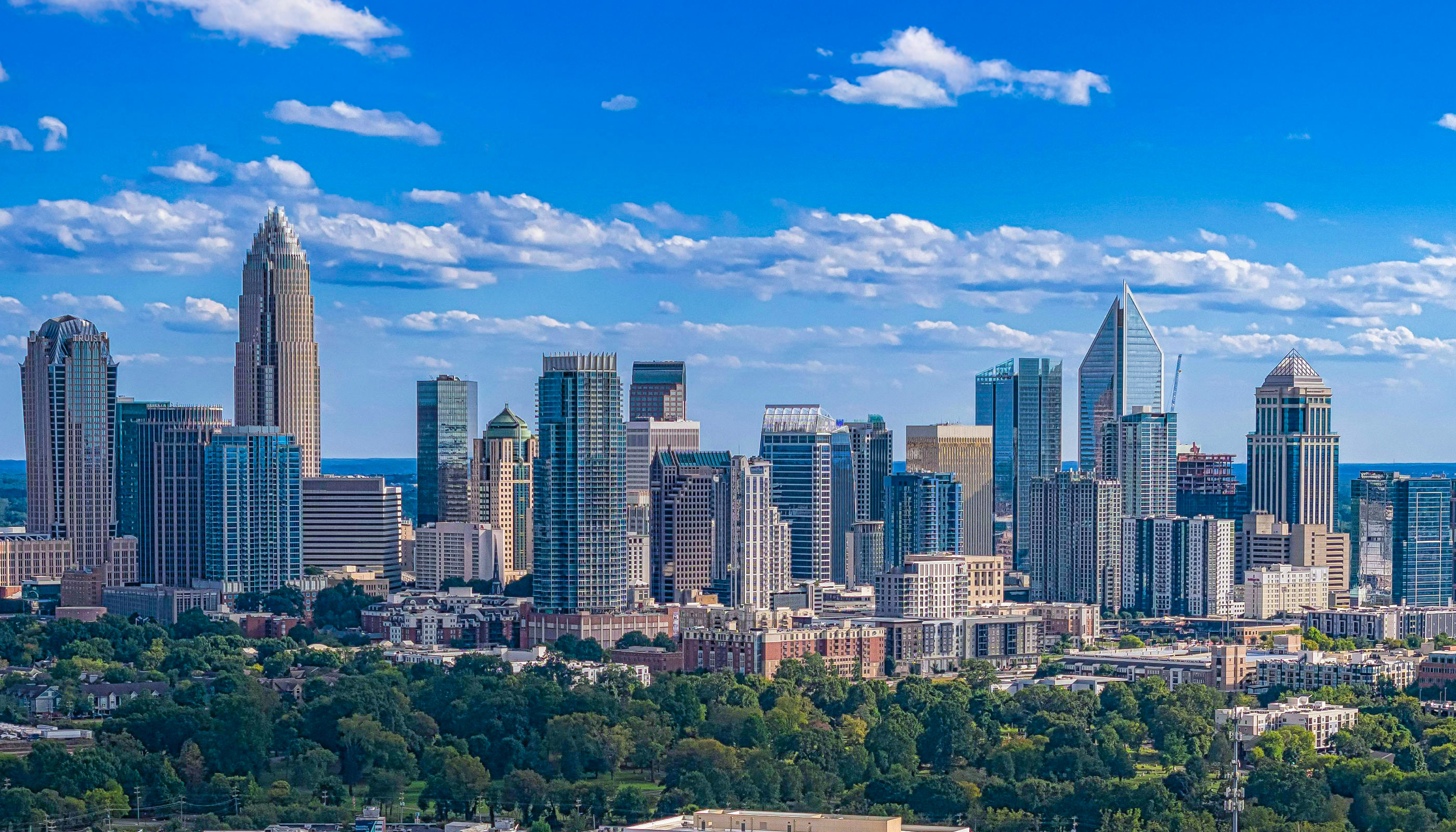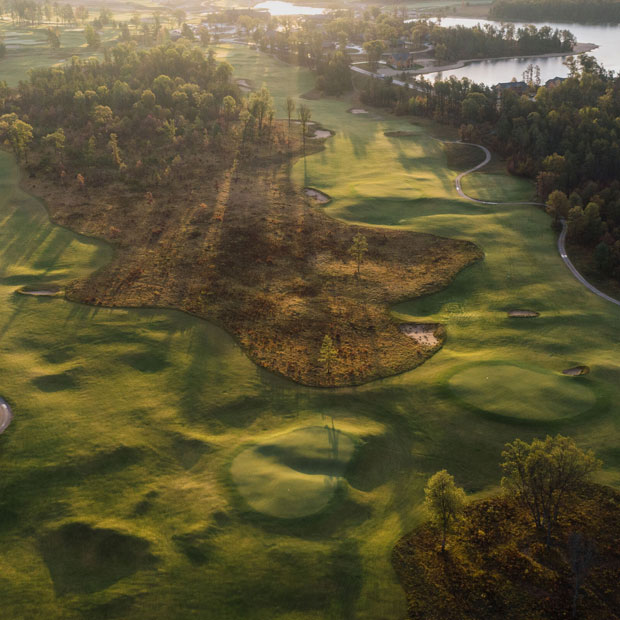What Does 'Restoring' a Golf Course Mean These Days?
A look into why "restored" golf courses keep looking newer and newer


The notion of restoring a golf course to its original design has never been more popular, especially in the U.S. Restoration-minded architects like Gil Hanse and Andrew Green are so busy that they consistently turn down job offers. Almost all of the classic American courses that populate the top tiers of the magazine rankings have, at some point in the past two decades, shelled out for historically inspired projects.
And yet, with each passing year, these courses look newer and newer. What gives?
The simple explanation is that wealthy clubs often link up architectural changes with infrastructural overhauls. That is, at the same time that these clubs might hire Hanse or Green to recapture former mowing lines, bunker positions, and green contours, they might also bring in a contractor to replace drainage and irrigation systems, lay down newfangled turf types, and install Better Billy bunker liners and SubAir hydronics. The courses end up looking distinctly modern, even if they’re vintage in shape and dimension.
A recent, high-profile example is Green’s work at East Lake Golf Club, host of the PGA Tour’s Tour Championship. Completed in a flurry of activity between August 2023 and July 2024, the project involved reconstructing every golf feature; relocating many tees, bunkers, and greens; regrassing fairways with Zorro Zoysia and greens with TifEagle Bermudagrass; and stretching the course to 7,455 yards. The total price tag was about $30 million.
By every conceivable definition, this was a renovation, not a restoration. However, because Green borrowed ideas from a 1949 aerial photograph of East Lake’s Donald Ross design, the project was widely characterized in the media as restorative. Now, by all accounts, Green did his homework on East Lake’s history and took pains to emulate Ross’s style. But I’m inclined to play semantics police here. If we call the East Lake project a “restoration,” we’ve drained the word of its meaning.
The reality is that most major golf course “restorations” these days are not motivated primarily by historical principles. “It’s usually an irrigation system that drives the bus,” says Tyler Rae, one of today’s most in-demand restoration and renovation architects. Rae recently completed historical projects at Lookout Mountain Club in Georgia and Wakonda Club in Iowa, and he’s currently heading up a $16-million renovation at Detroit Golf Club. “From 1985 to 2000, all of these clubs did an irrigation system. And then they all rode out the storm, and now [the systems] are all 30 to 35 years old, and there are leaks everywhere. Almost every single club that calls, they say, ‘Well, Tyler, our irrigation system is getting old, and we think when we do the irrigation, we’re going to spend three or four million. So we might as well do the bunkers, greens, and tees at the same time.’ That is, 94 percent of the time, the call that we get.”

It’s nothing new for golf clubs to prioritize infrastructural needs over architectural wants. The desire for refined conditioning dates back to the beginnings of the game. Still, there is no doubt that something has shifted in the restoration and renovation business over the past 20 years.
The modern idea of golf course restoration formed in the 1980s and 90s, when appreciation for the “Golden Age” of golf architecture — a period encompassing the 1910s, 20s, and 30s — first became widespread. Architects like Ron Forse, Ron Prichard, Brian Silva, Keith Foster, Tom Doak, Gil Hanse, and Mike Clayton began to advocate for and specialize in the restoration of old courses. The projects of this first wave had relatively modest budgets. They were usually completed piecemeal, over the span of several years, and without long shutdowns. As a result, the courses tended to retain their antique appearance — their “frayed-khaki patina,” as Rae calls it. They hadn’t been rebuilt so much as gradually nudged into forms resembling their original selves. For this kind of work, the word “restoration” felt appropriate.
So what has changed recently? Bruce Hepner — who has led many restorations over the past 35 years, both as an associate with Tom Doak’s Renaissance Golf Design and as a solo architect — offers a one-word diagnosis: “Dollars.”
“When it’s post-2010,” Hepner says, “when the stock market starts climbing and golf gets popular, anybody who got in on the stock market is making a lot of money. And there are a lot of new members [at golf clubs]…. They’re new to the game, and COVID brings another 10 to 20 percent of people who’ve never played golf before and are flush with cash. So now there are clubs that have no problem dropping $15 million. And I think that’s when the big-money renovations came in, and are still coming in.”
As Hepner sees it, the more a club spends on a project all at once, the further the pendulum swings away from restoration and toward renovation. “Because you have so much money, you can do anything you want,” Hepner explains. “‘Okay, let’s put these bridges in. Put SubAir in. Let’s do Better Billy Bunkers.’ And they’re beautiful projects, but you look at them, and they don’t look like something restored to me. There’s no patina. It looks like a brand-new golf course.”
Aside from the simple fact that some people have a lot of post-Recession money to spend, a few other dynamics seem to be pushing clubs to go big these days:
1. Keeping up with the Joneses. When the club across town drops $20 million on a course renovation, you might think that you need to spend just as much to keep competing for members. “It’s a badge of honor, kind of,” Hepner says. “‘We spent 20.’ ‘Well, we spent 30.’”
2. The “wow” factor. A pricey, all-at-once renovation attracts a level of attention and excitement that a careful, years-long restoration cannot match. Tyler Rae remembers when, in 2006, Philadelphia Cricket Club called Keith Foster’s office, where Rae was working at the time. “They wanted to do work in 2007, 2008,” Rae says. “[Foster] said, ‘No, save your money, save your money, save your money. I don’t want to do a $1-million job. I don’t want to do a $2-million job. I want to do a $6-million job.’ So he had them save their money. And then they did everything, all in one fell swoop. Shut it down for eight to 10 months and blew it out. And they got all the awards. I mean, Philly Cricket went from 400th in America to 32nd. They flipped the switch, and they are the healthiest club in the Mid-Atlantic region now…. That, to me, is what I call the Philly Cricket Model. You rip the band-aid off, and you open it back up, and you get all the buzz and all these people flooding your initiation.”

3. The superintendent’s influence. At many high-end golf clubs, the power of the superintendent has increased over the past few decades. What a superintendent wants out of a course improvement project tends to carry huge weight. “If you have a high-powered superintendent who came from Oak Hill or Oakland Hills or something like that,” Hepner says, “they’re going to want to do what they just did elsewhere…. They want PrecisionAire, they want Billy Bunkers, they want three thousand [irrigation] heads — because that’s what they’re used to.”
By the same token, superintendents who are averse to high-tech, high-input practices can have an equal influence in the opposite direction. For the past 20 years, Hepner has worked on a gradual restoration of Donald Ross’s Essex County Club in Massachusetts with Director of Grounds Eric Richardson. “He’s probably the best superintendent in the business,” Hepner says. “We do all our [projects] in-house, we take our time. He loves it. There’s patina all over that place…. And he’s huge because he has set the tone.”
4. A bid for longevity. The clubs approving $20- to $30-million renovations right now believe they are setting themselves up for a more cost-effective future. “They’re all saying, ‘Hey, this is our one shot to redo all the irrigation,’” Rae explains. “And that’s a 50-year infrastructure project…. It’s like a house. When you renovate your house, you want to put in the things that last the longest when you replace them, so you don’t have to replace them again…. I see that taking big precedence now. Clubs say, ‘Okay, we’re going to spend this $10 million or $20 million, but we’re going to do it once and we’re not going to touch it for 40 years.’”
Buy once, cry once, as the saying goes.
Still, Hepner wonders if today’s big spenders are prepared for an uncertain future. “It’s scary because I think a lot of people — new club members — have never felt any financial hurt,” he says. “They got into the game after 2010. They’ve seen the stock market just rise. I’ve been through — I don’t know how many recessions. I remember standing in line to get gas back in the 70s…. Maybe we’re not going to have a hiccup. But if history repeats itself, we’re going to have some kind of correction. And some clubs are going to be in a lot of trouble, a lot of hurt.”
Meanwhile, the clubs that have moved more cautiously, committing to long-term, light-touch stewardship of their courses, may look pretty smart in the end. They won't be in debt, their members won't have been beaten down by years of assessments, and they may have something that money alone can’t buy: a golf course that still looks and feels old enough to deserve the adjective “restored.”
This piece originally appeared in the Fried Egg Golf newsletter. Subscribe for free and receive golf news and insight every Monday, Wednesday, and Friday.
Leave a comment or start a discussion
Engage in our content with thousands of other Fried Egg Golf Club Members
Engage in our content with thousands of other Fried Egg Golf Members
Get full access to exclusive benefits from Fried Egg Golf
- Member-only content
- Community discussions forums
- Member-only experiences and early access to events












Leave a comment or start a discussion
Lorem ipsum dolor sit amet, consectetur adipiscing elit. Suspendisse varius enim in eros elementum tristique. Duis cursus, mi quis viverra ornare, eros dolor interdum nulla, ut commodo diam libero vitae erat. Aenean faucibus nibh et justo cursus id rutrum lorem imperdiet. Nunc ut sem vitae risus tristique posuere. uis cursus, mi quis viverra ornare, eros dolor interdum nulla, ut commodo diam libero vitae erat. Aenean faucibus nibh et justo cursus id rutrum lorem imperdiet. Nunc ut sem vitae risus tristique posuere.